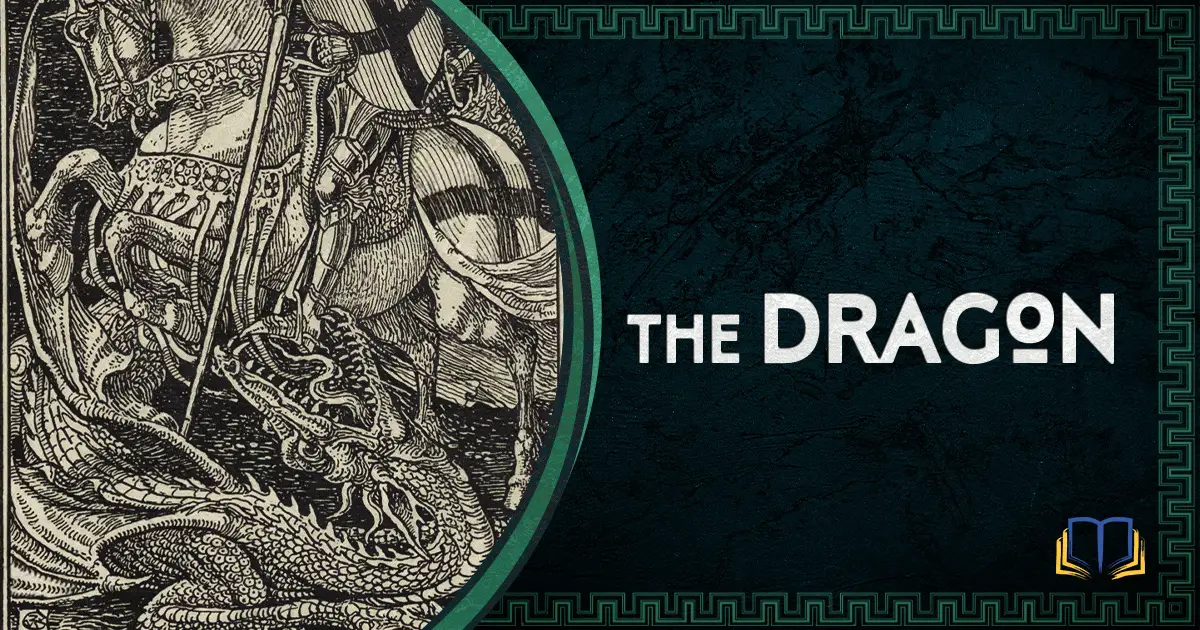Dragons are in a lot of medieval literature, but the one in Edmund Spenser’s The Faerie Queene is particularly important. Why? Because this is supposed to be the great dragon that was killed by St. George.
This dragon fits the typical stereotype for a dragon coming from medieval Western literature. It’s huge, it breathes fire, it has two wings, and also flaming eyes. He is a mighty foe to defeat, and this task becomes especially difficult for the Redcrosse knight, or St. George, in The Faerie Queene.
Thankfully, this dragon is also prideful, another common trait for dragons, and that is ultimately why he falls.
The dragon underestimates the Redcrosse knight, and our hero is able to sucker punch him a number of times.
Who Does the Dragon Represent in The Faerie Queene?
In addition to representing overconfidence and the dangers of thinking yourself undefeatable, the dragon is also a representation of the devil. Specifically, the devil as seen in the Adam and Eve story, where he tempts Eve in the form of a serpent.
To follow the allegory, by defeating the dragon, St. George overcomes the devil and his own personal sins, becoming the true knight of Holiness represented in the main theme for book 1.
Arthurian Bibliography
- Norris Lacy, Geoffrey Ashe, Debra Mancoff – The Arthurian Handbook (Second Edition)
- Alan Lupack – The Oxford Guide to Arthurian Literature and Legend
- Ronan Coghlan – The Illustrated Encyclopaedia of Arthurian Legends
- Anonymous – Lancelot-Grail, the French Vulgate
- Sir Thomas Malory – Le Morte d’Arthur
See also my ever-expanding list of primary and secondary sources.



